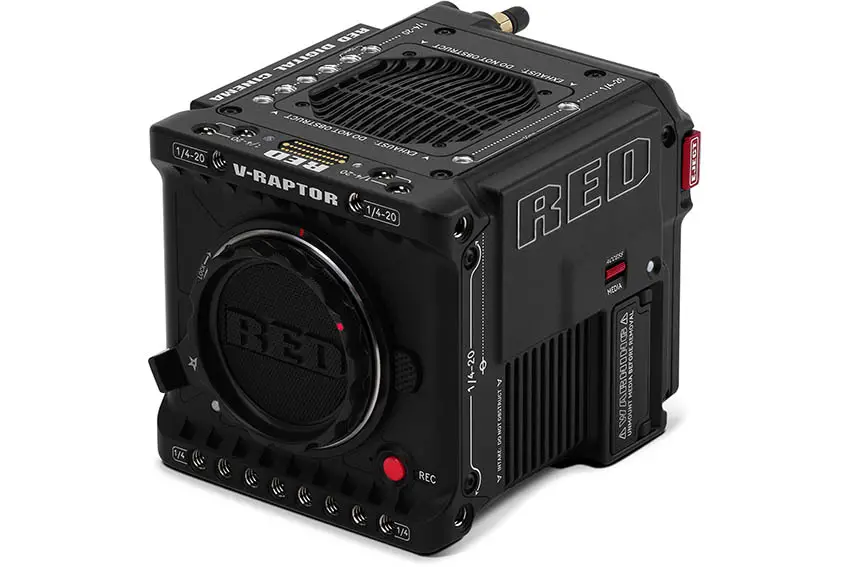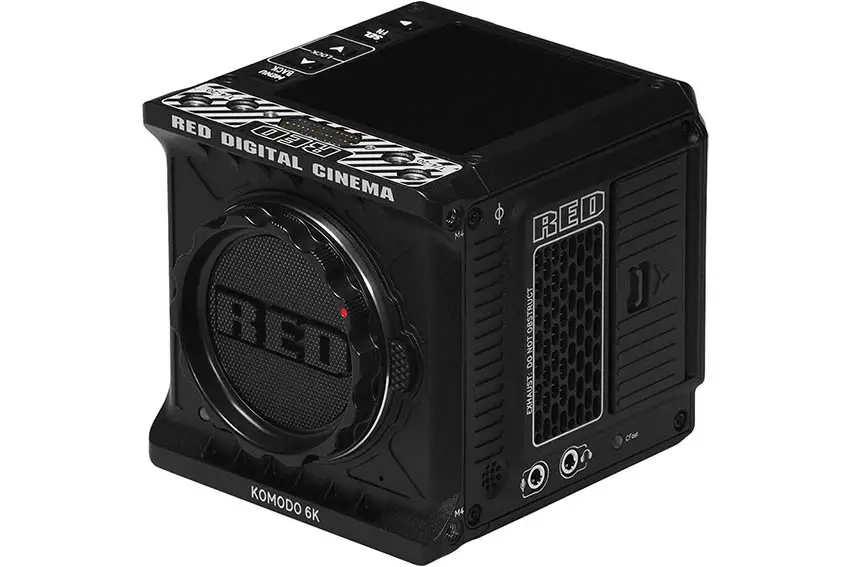
[ad_1]
The RED KOMODO 6K signaled a huge change coming to the company’s digital cinema lineup. Now, with the release of the V-RAPTOR 8K VV, we are getting to see what that means with the DSMC3 system. The cameras have similarities for sure, but they have a ton of differences – and the biggest is probably the vastly different price points.
For shooters wondering how they stack up against one another, this comparison of the KOMODO and V-RAPTOR from filmmaker Kevin Reyes should be a huge help as it covers essential items like dynamic range, autofocus, and low-light performance.
At first glance, the V-RAPTOR just looks like a scaled-up KOMODO. And that might be the best description you can give it. The tests should be interesting and here is what is happening in the video:
- Startup and Black Shade time
- Colors and Skin Tones
- Dynamic Range
- Low Light
- Autofocus
Startup and Black Shade Time
Startup time was essentially the same between the two cameras. It’s possible the V-RAPTOR just barely beat the KOMODO by a second, but it won’t make any practical difference.
Now, where you will see a time difference is in the black shade calibration. The KOMODO does it in about half the time as the V-RAPTOR. This actually makes sense considering the V-RAPTOR has a much larger sensor.

Image Credit: RED
Camera and Lighting Setup
For the remaining tests, both cameras were set up side-by-side with the same lenses. They were also set to their max recording modes. The KOMODO being set to 6K 17:9 and the V-RAPTOR going to 8K 17:9. Both were recording in R3D at MQ with matched exposure and white balance.
The lenses in play are the Canon EF 35mm f/1.4L and the EF 70-200mm f/2.8L. No filters or anything needed.
Lighting is being handled by an Aputure LS 600D Pro as the key through a sheet of diffusion while a Nanlite Forza 500 works as an ambient/backlight. there’s also another 600D for more ambient light.
Colors and Skin Tones
Perhaps unsurprisingly, the KOMODO and V-RAPTOR have very similar colors. Both look good straight out of camera. There is a note about how much bigger the VistaVision sensor is and how that impacts framing.
One thing that did show with a tighter frame is that the KOMODO might be more saturated by default. The footage and colors do match extremely well though and a color card confirms it.

Image Credit: RED
Dynamic Range
This was another tough comparison. The cameras seem to handle over and underexposure very well. Even overexposed 4 stops Reyes was able to pull out most of the details with perhaps a little bit of a red tint in the shadows. He does call out that the V-RAPTOR might be a touch better than the KOMODO at retaining highlights.
For underexposure, both cameras appear to take on a green tint as you go lower and lower. It is also here where we get a clear winner with the V-RAPTOR. The KOMODO turns into a mess when you get down to -6 stops, but the V-RAPTOR actually has a workable image there. Neither is great and you shouldn’t ever be in this situation, but it does show the advantage of the V-RAPTOR.
Low Light
Going with ISO 800 on both cameras and a dark, more contrasty scene, you can see how the cameras handle low-light shooting. Both actually do very well. The V-RAPTOR has an advantage with its larger sensor and higher resolution, showing a clip with less noticeable noise. The KOMODO actually has a green tint in the shadows.
With the V-RAPTOR set to Super 35 mode you can see that the cameras get a bit closer. It does show off how the 6K S35 setting on the V-RAPTOR is excellent.
Autofocus
AF is a new feature for RED cameras and still a work in progress it seems. Both the KOMODO and V-RAPTOR have inconsistencies with autofocus performance. It’s a little jumpy and not quite locking on to moving subjects. This is a well lit room too, which should be best case scenario.
Moving to low-light things get a bit worse. There was a lot more hunting. The KOMODO in particular was bad with the V-RAPTOR being a tad better, but still not good or trustworthy. These tests were done with multiple lenses too. Early days still for AF.
It really sounds like the V-RAPTOR is a scaled-up KOMODO, which is great! Both cameras perform very well in all the tests.
[source: Kevin Reyes]
Order Links:
[ad_2]






